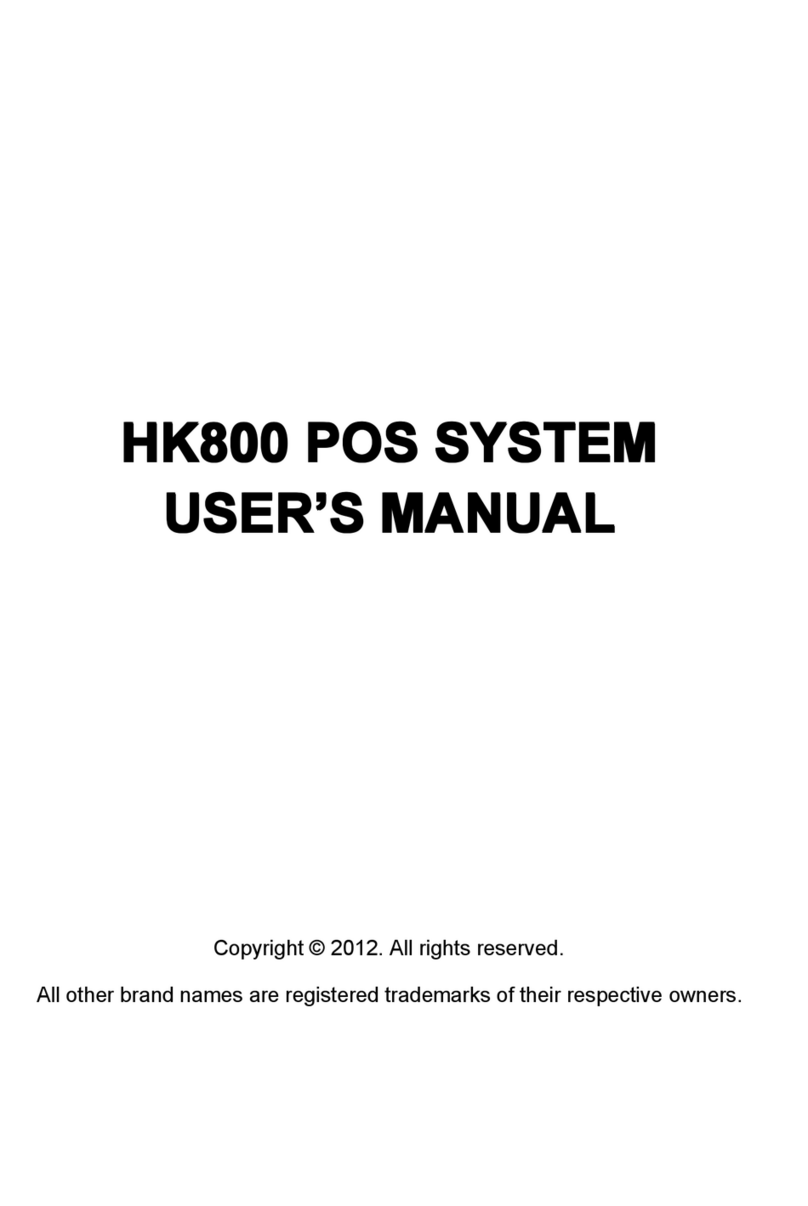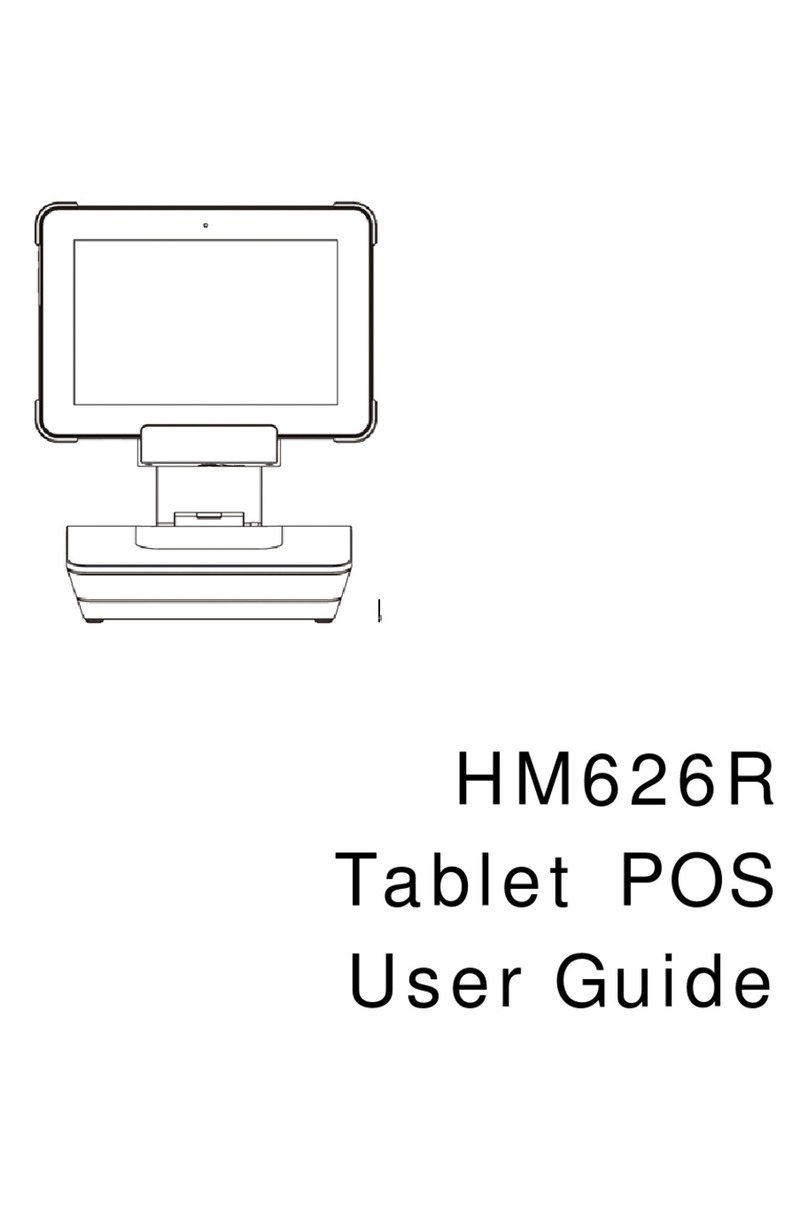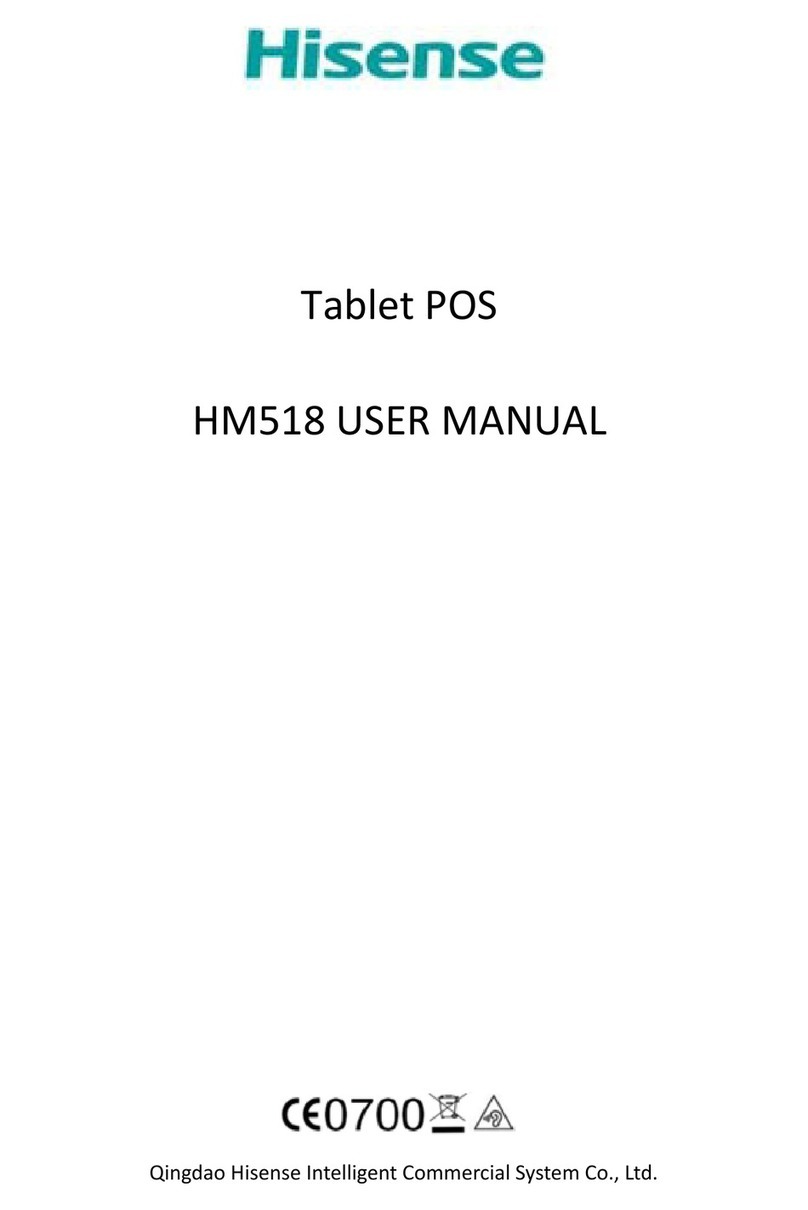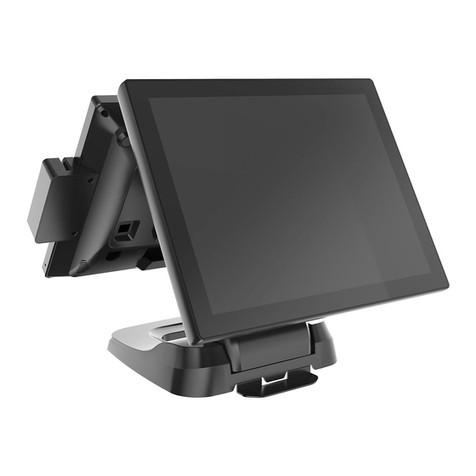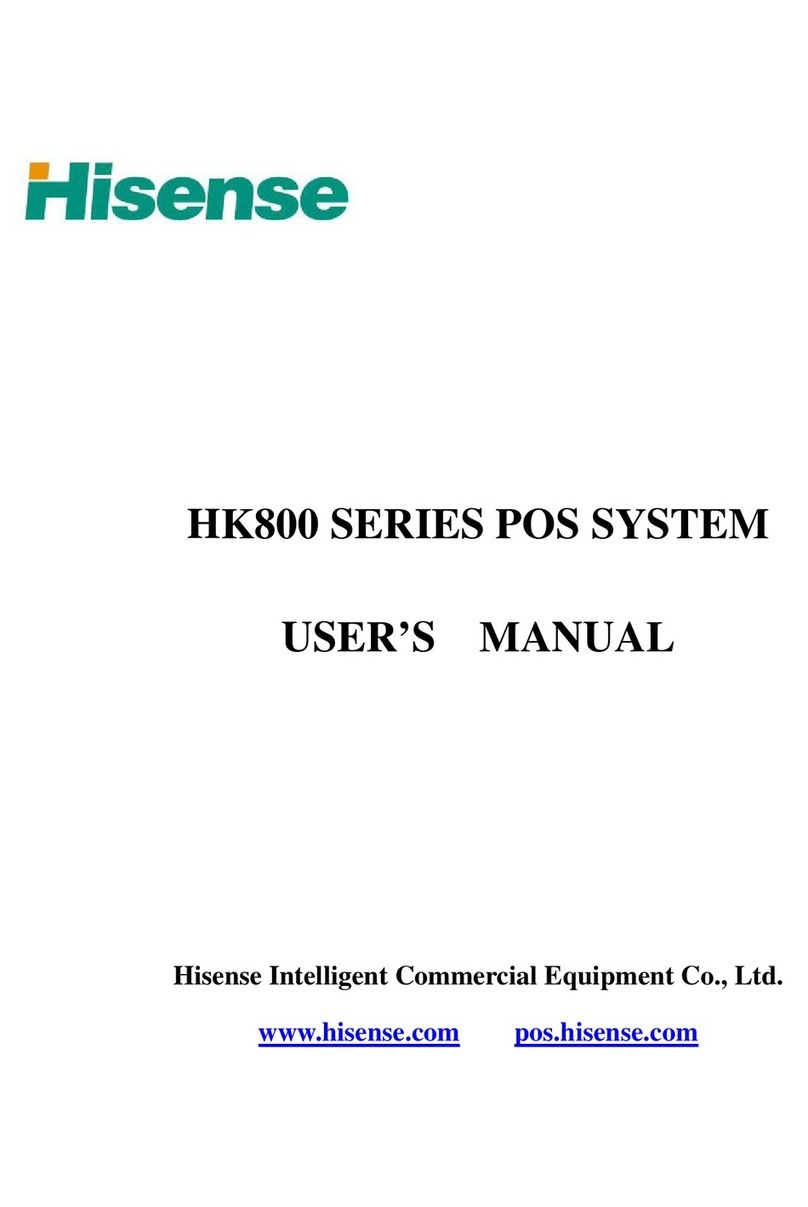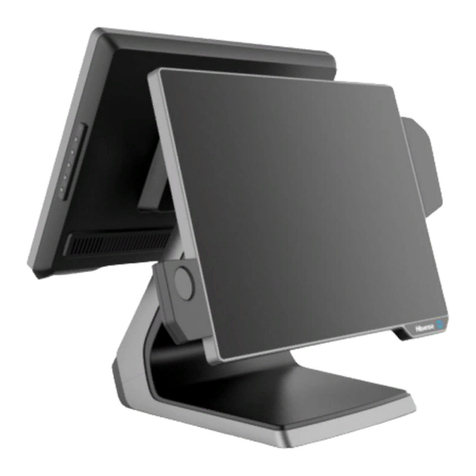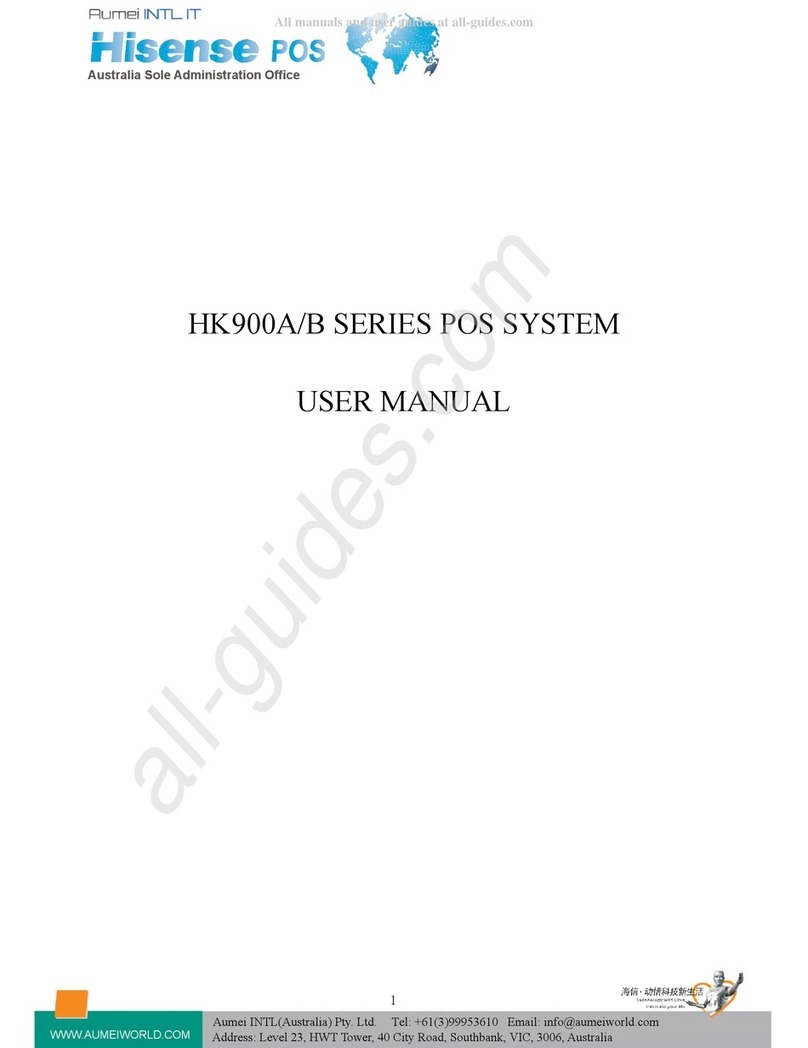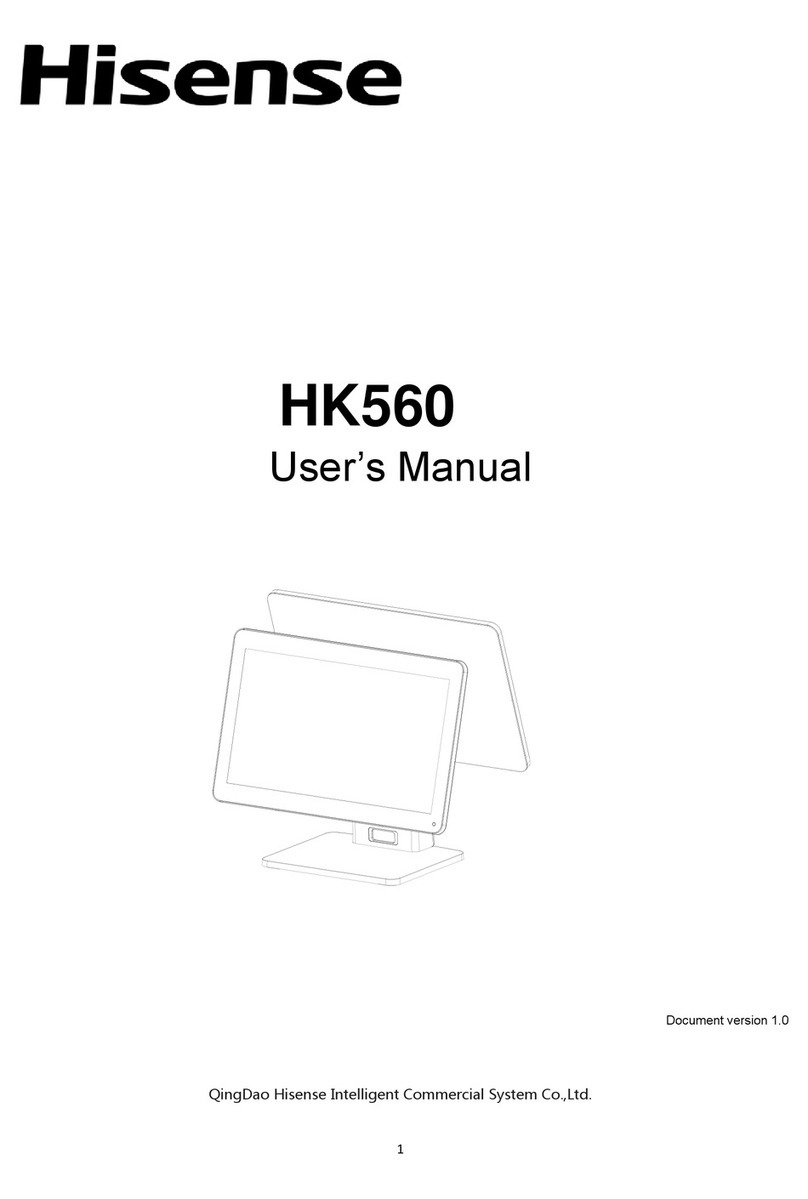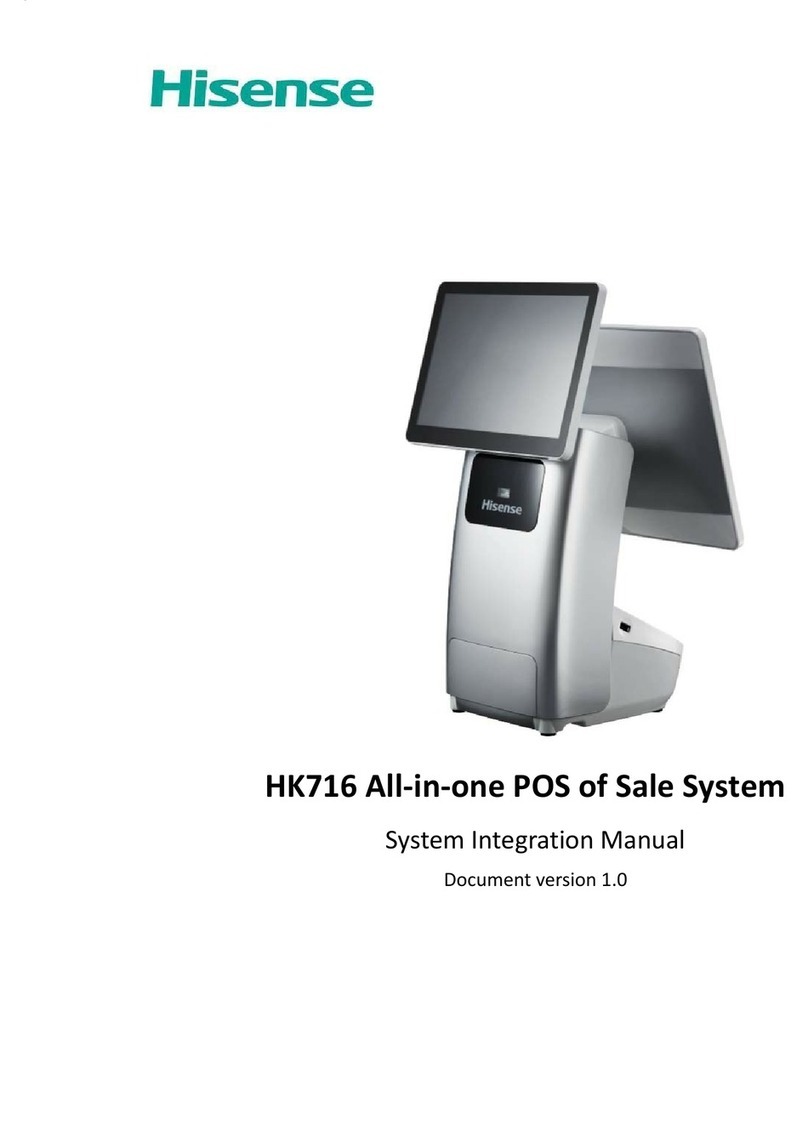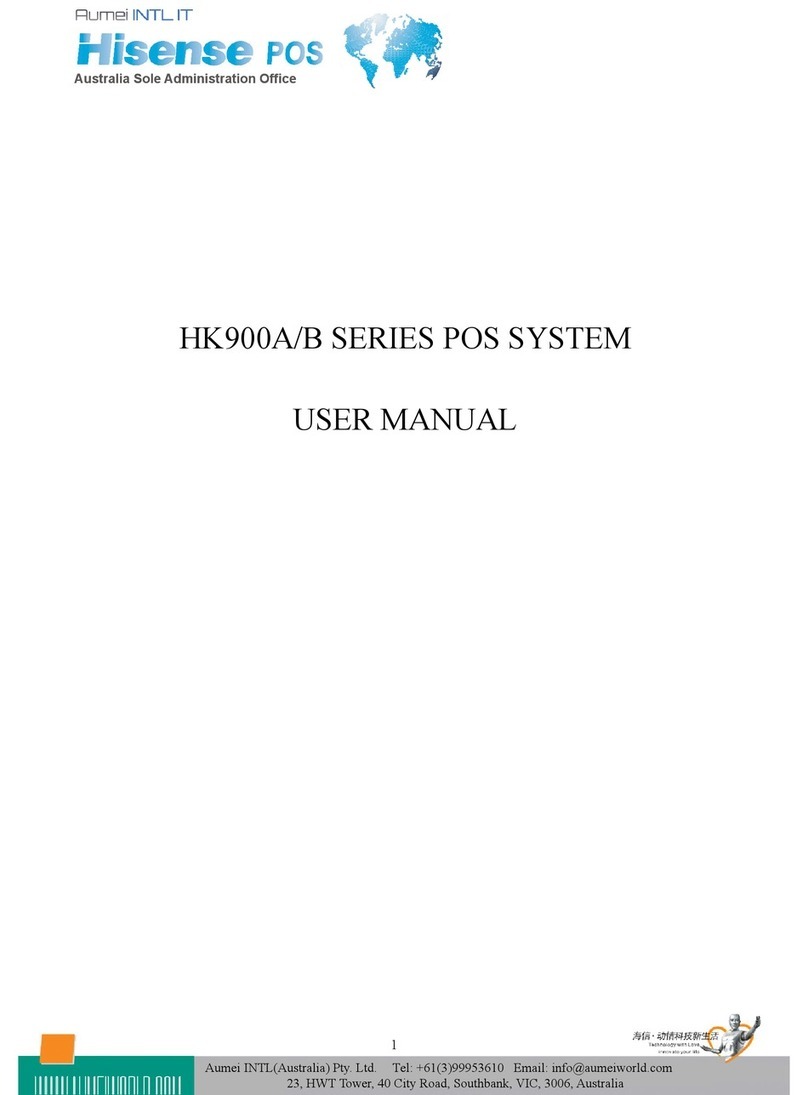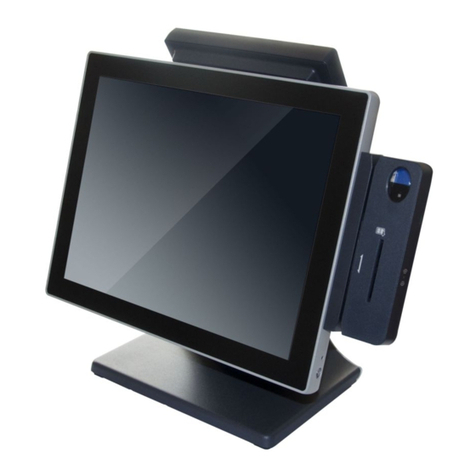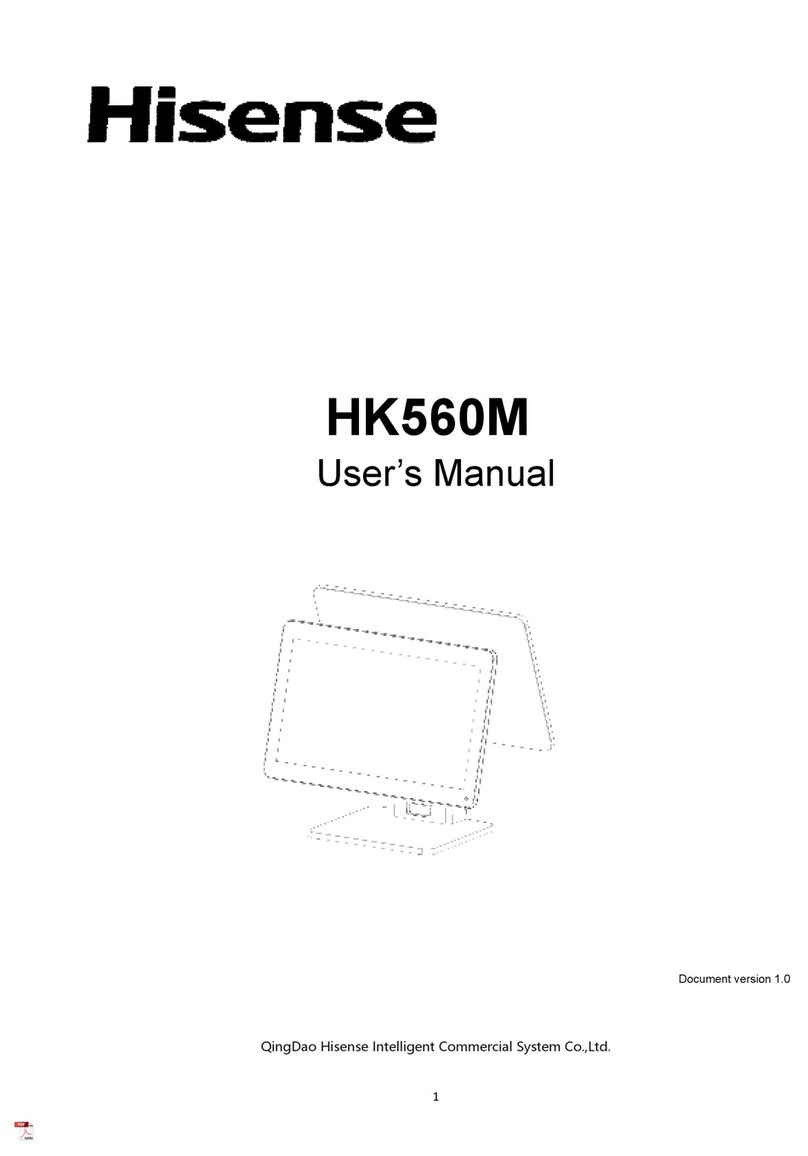
2
Safety Notices Before Installation or Use
☆It is required grounded well and the supply voltage shall be stable, and you must confirm that
the voltage of the outlet provides shall be in line with the voltage marked on the label of the
unit.
☆Be sure not to sprinkle any liquid or fall any object into the unit.
☆Be sure not to keep heavy, strenuous movement, shake & heavy strike away from the POS.
☆Do not switch on or off the host frequently, because it is easy to result in damage on the
machine.
☆Be sure not to unplug or plug in any live part or external device when they are in energized
state, and the connecting cables of the POS between parts shall be connected securely.
☆Be sure neither to lengthen cable nor to replace parts at your will, if you have any demand,
please contact with the reseller.
☆The unit shall be used under dry, ventilated & clean environment away from sunlight. Avoid to
making the air vent of the host machine blocked or covered
☆If any liquid sprinkles or any sundry falls into the unit, please shut it down immediately & switch
off power supply, take batteries down, dry the liquid or remove the sundry. If you take the
batteries down, you shall reset CMOS.
☆In case of safety fault, such as peculiar smell, abnormal sound, leakage and other faults, you
must switch off the power supply at once and then contact with reseller.
☆When inserting USB flash or disk, you shall kill virus to prevent the host machine from virus.
☆The RJ11 port at the back of the host is connected with the cash drawer, as it is not a
communication port, users shall not use the port for dial-up networking.
☆The product is a Level A one, it may cause radio interference in living environment. In such case,
users may need to take practical & feasible measures against the interference.
☆When the POS is not in use, you shall switch off power supply.
The manufacturer has the right to modify the contents of the manual without prior notice!
Product standard NO:Q/0202 RSR527
Product standard Name: POS device
Warning:
1. Absolute Ratings of Environment:
Operating Temperature:0~40℃
Operating Humidity:10%~85%RH
Storage Temperature:-10~50℃
Storage Humidity:10%~90%RH
2. Main plug on the power supply was used as disconnected device. The socke
t-outlet shall be installed near the equipment and shall be easily accessible
3. If any damage to the power supply or the equipment, please contact local
service person for help.
4. Static may damage to the integrated circuit in the host machine.
5. If a replaced battery is not right, this may cause explosion or serious
damage. Must replace the same type of batteries or similar ones recommended
by the manufacturer
6. Used only with attached AC/DC power supply.
